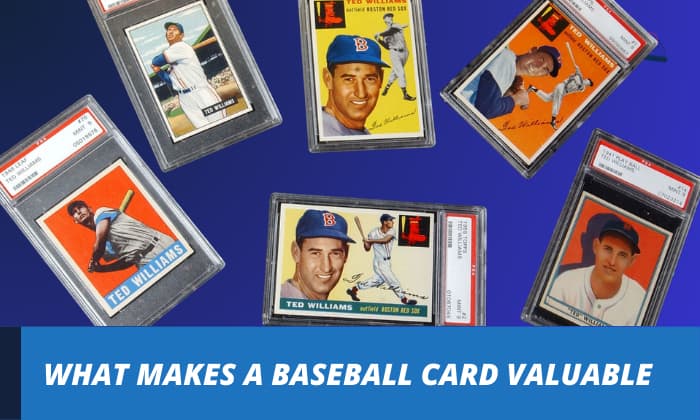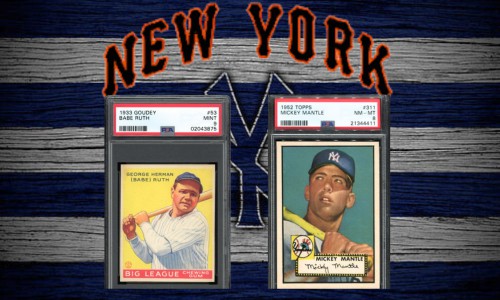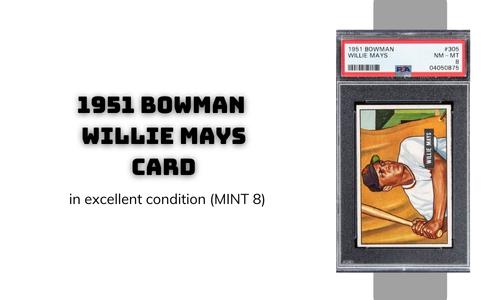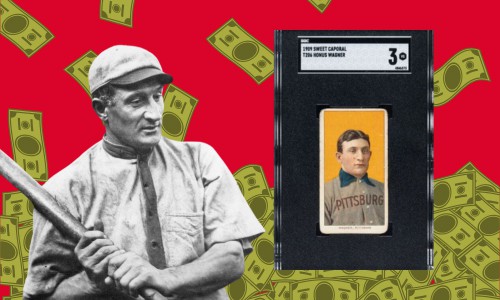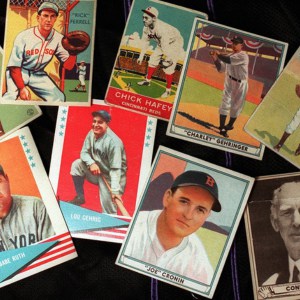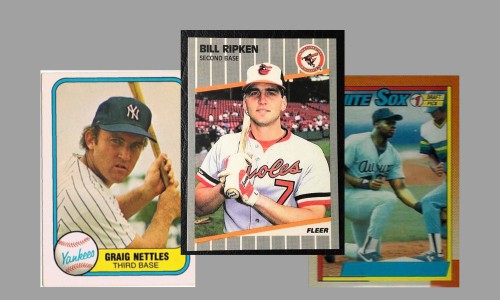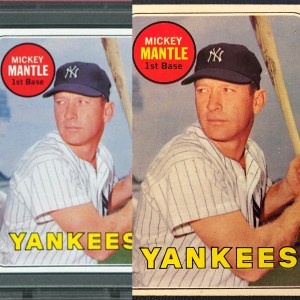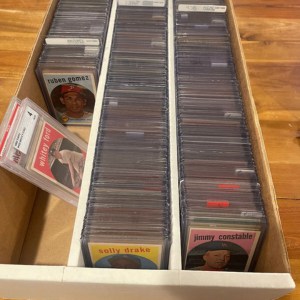Baseball cards hold immense value in the field of sports memorabilia. Whether a fan or a curious observer, exploring what makes baseball cards valuable is an exciting journey that merges sports, culture, and the thrill of collecting.
So, what makes a baseball card valuable? It is based on several factors like player significance, condition, grading, rarity, age, errors, variations, and set sequence. These cards are worth more than you think.
That being said, let’s dive deeper into the subject!
Contents
Price Determinants of Baseball Cards
Baseball cards have long been cherished by collectors and enthusiasts alike. These little pieces of cardboard hold a rich history of the sport, capturing the essence of legendary players and iconic moments.
If you’re wondering how to tell if a baseball card is worth money, we will explore each price determinant of baseball cards, shedding light on what makes certain cards of baseball prices higher than others, and provide an example.
1. Player Significance and Popularity
The fame and impact of a baseball player have a profound effect on the value of their trading cards.
Cards featuring legendary players and Hall of Famers like Babe Ruth and Mickey Mantle are highly sought after, as their names are known throughout baseball history.
An example of this is the 1952 Topps Mickey Mantle rookie card, considered one of the most iconic baseball cards ever produced, sold for a staggering $5.2 million at auction in 2021.
2. Card Condition
Following a baseball card value guide, you will know that condition is important when it comes to determining its value. Pristine condition is the ultimate goal, as cards devoid of creases, stains, or discoloration are highly coveted.
An example of this is the 1951 Bowman Willie Mays card in excellent condition (MINT 8) fetched over $100,000 in recent auctions, while the same card in poor condition would only be worth a fraction of that amount.
3. Grading
Professional grading organizations play a vital role in the baseball card market. Companies like Professional Sports Authenticator (PSA) and Beckett Grading Services (BGS) evaluate the condition of cards and assign them a grade.
Grading provides a standardized assessment that helps buyers and sellers determine the value of a card accurately. Higher grades, such as PSA 9 or BGS 9.5, can substantially increase a card’s worth.
An example of this is the 2009 Bowman Chrome Mike Trout rookie card graded Mint 9 sold for a record-breaking $3.9 million, highlighting the premium placed on pristine cards.
4. Rarity and Scarcity
Rare baseball cards have high market value. Limited production runs, special editions, and cards featuring unique attributes can make them highly sought after.
For instance, cards from vintage sets that had limited print runs due to manufacturing constraints or historical circumstances are often prized possessions for hobbyists.
A perfect example is the T206 Honus Wagner card, produced between 1909 and 1911.
It is one of the rarest baseball cards in existence. With only around 50 to 200 copies known to exist, it has consistently sold for millions of dollars in recent years.
5. Age and Historical Significance
Vintage baseball cards possess a certain charm, as they offer a glimpse into the sport’s past.
Old baseball cards, especially those associated with significant milestones or historic events, tend to be highly valued due to the limited number of cards.
An example of this is the 1914 Cracker Jack Joe Jackson card, which showcases the famous “Shoeless” Joe during his early career and is considered a highly desirable and valuable piece.
This card can be considered an in vestment as the older they get, the pricier they become.
6. Errors
The world of baseball card collecting harbors a peculiar fascination with errors, as they can unexpectedly amplify a card’s value. These manufacturing mistakes imbue certain cards with a tempting rarity and uniqueness, attracting collectors.
A perfect example of this is the 1989 Fleer Billy Ripken “F**k Face” error card. A printing oversight left an obscenity written on the bat held by Ripken.
While Fleer swiftly corrected the error, the original version, complete with the explicit content, has become a treasured and highly valuable card sought after by collectors.
7. Variations
When exploring a card set, intentional variations become a delightful treasure hunt for collectors. These variations are purposeful distinctions that manifest as alternative poses, color variations, or alternate versions within the set.
The presence of these captivating variations stirs excitement among collectors, whose investment is in the challenge of piecing together a complete collection.
Consider the 1969 Topps Mickey Mantle variation card, which boasts two distinct versions—one featuring a yellow-colored ‘MANTLE’ and another showcasing a white-colored ‘MANTLE’.
8. Set Sequence
The placement of a card within a set holds a special significance that influences its appeal and value.
Cards that occupy distinctive positions within a set, such as being the first or last card or commemorating a notable milestone, often captivate collectors.
These cards serve as poignant reminders of important moments or symbolize the beginning or culmination of a player’s journey within that specific set.
For instance, the 1993 Upper Deck SP Derek Jeter rookie card holds tremendous value due to its placement as card number 279 in the set.
This card marks a significant milestone in Jeter’s early career and has become one of the most iconic cards associated with him.
Its position within the set adds an extra layer of collectability, heightening its intrinsic value to collectors seeking to complete their collections.
Conclusion
Understanding what makes a baseball card valuable is vital as it can help you decide which cards you’re planning to collect or resell. Keep in mind that market demand and current trends can also influence prices.
Understanding the factors that contribute to a card’s value enables you to handle the market effectively. It allows you to identify hidden gems, appreciate unique qualities, and make educated choices.
Hence, if you’re looking to find the value of baseball cards, conducting a baseball card values lookup is essential.

A powerful swing and the ball is flying across the field, just one hit, and we might never forget the thrill it brings. I do not know about you, but I never do. Every baseball game is the chance to compete with others and cooperate with your teammate. It is among my biggest passions.



